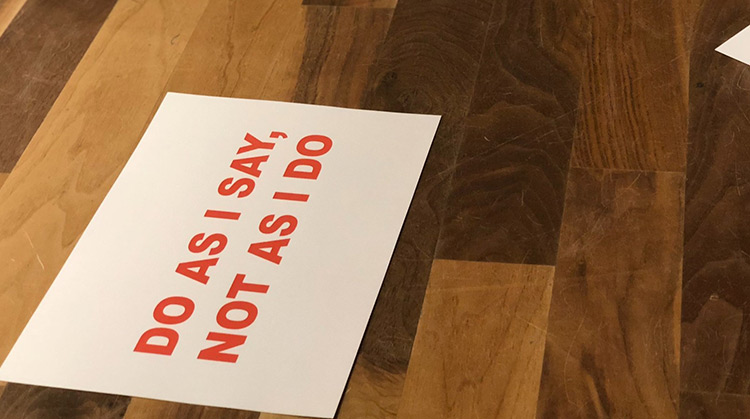Ever wondered why your well-researched project or campaign hasn’t generated the results you thought it would? When all your customer insight pointed to a great need that you have answered, yet when you tell the world about it the reception is OK, rather than astronomical?
And those excruciating and difficult conversations that follow. The ones where we have to explain to our team mates, our boss and our client that the thing we’ve just championed, that idea that was a no-brainer, that campaign which was driven by customer insights that basically screamed “Pass Go and Collect $200” has, in fact, fallen a bit flat.
Social desirability bias can lob a grenade in your market research results. And the marketing, content and PR plans they form the bedrock of.
One of many oddities of human behaviour, social desirability bias is when, for one reason or another, people are prone to respond in ways that make them look more socially acceptable.
And it’s rife. It’s rife in surveys, focus groups, interviews and social media.
People can have a tendency to misrepresent their behaviour, attitudes or reactions. They over report the ‘good’ and under report the ‘bad’ to present the best versions of themselves.
Which isn’t super helpful for us marketers, PRs and content producers. It’s something that tends to get in the way of understanding our customers better.
But when it comes to social desirability bias, we’re all guilty. You can probably think of a whole heap of times that what you’ve posted something on social media doesn’t correspond to how you actually feel.
Take my recent family camping trip, for example. The posts of us all happily smiling around the campfire didn’t tell the whole story. You couldn’t tell that putting the tent up with my husband led to near divorce. Or that I felt run ragged by my three-year-old. Or that I was exhausted after being kept awake for most of the night by a storm!
We all do it. Whether it’s pictures of a ‘fun’ family vacation, that you return from immediately needing another break, a motivational Monday quote, when you feel anything but, or ticking all the boxes to highly recommend your AirBnB stay, even though it was mediocre.
I bet you’re thinking of a few of your own examples.
So, we all consciously and unconsciously misrepresent our behaviour, thoughts and feelings. And this tends to occur because we want to dodge the judgement of others and avoid feelings of shame. Or we simply want easy, hassle-free interactions with other people (for example, simply answering ‘yes’ to every survey question).
Some topics are notorious for encouraging social desirability bias: charitable donations, health issues, food behaviours, exercise, alcohol consumption, gambling, religion, patriotism, bigotry, physical appearance, impulse buying, voting or even intellectual achievements.
The outcome? When we rely on customer insights based on data that somewhat deviates from people’s personal truth, we draw conclusions that misrepresents the problem, solution, and approach. This causes marketing campaigns to fail, content that struggles and PR activity that falls short.
There are techniques that can help you get to the truth behind participant responses and reduce the negative consequences of social desirability bias. Tactics like being conscious of word choice and using indirect questioning, for example.
But it’s worth remembering that surveys, focus groups, interviews and even social media still always rely on accurate self-reporting. They’re one step removed from actual behaviours, thoughts and feelings, and so there remains a risk of distorted facts.
Don’t rely solely on self-reporting models in your customer research. Search data is a massively valuable and yet incredibly overlooked source of first-party customer data. Just like data from website analytics platforms, it can show us what people actually do. But more than this, search data can also give us insights into what people think and feel – at a particular moment in time and on an ongoing basis.
And unlike surveys, where the need to present our best selves can get in the way of accurate data, we’re all much more honest with Google. We ask it questions we wouldn’t ask our doctor, tell it things we wouldn’t discuss with our partner or closest friends. Because, unlike other people, Google doesn’t make us feel judged or ashamed. We don’t need to worry about offending Google.
Search data and search listening gives us a social desirability bias-free perspective our customers.
Self-reporting reporting methods can then help us understand more about context, enabling us to ask questions that we would never get the answers to through search data alone and to learn about how people want others to see them.
Combined, these research methods are more than the sum of their parts. They give us the most multi-dimensional insights into our customers, allowing us to plan around solid customer truths. Which means more impactful campaigns, content and PR activity. And far fewer (I won’t lie, we don’t live in a totally perfect world) excruciating, difficult conversations.
Want to learn more about how search listening fits into the customer journey? Sign up to our online course.





